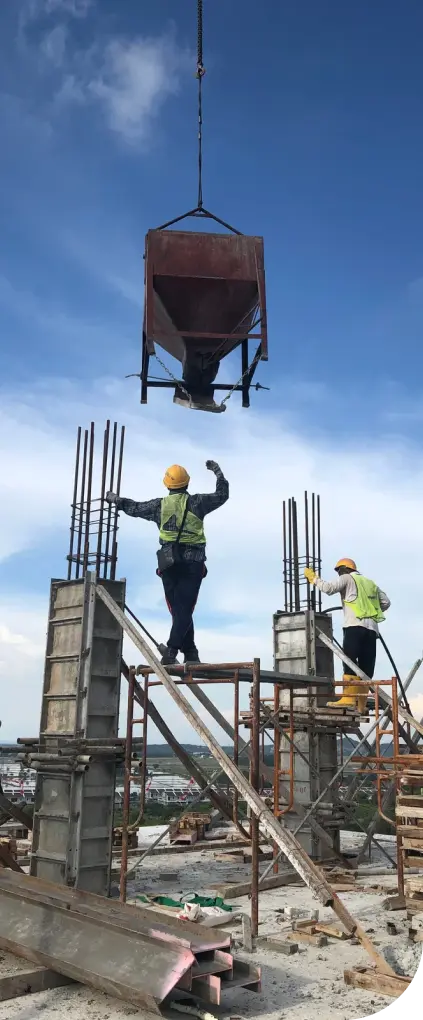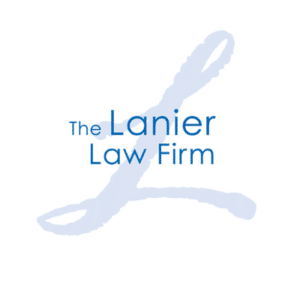Johns Manville: Trust Fund, Lawsuits & Products
Johns Manville, the oldest and largest manufacturer of asbestos-based products, exposed millions of workers to asbestos for more than a century. The company filed for bankruptcy in 1982 as a result of its overwhelming asbestos-related liabilities and established an asbestos trust fund. In lieu of a Johns Manville asbestos lawsuit, the Manville Personal Injury Settlement Trust provides compensation to individuals exposed to asbestos through Johns Manville’s activities.
Home » National Mesothelioma Law Firm » Asbestos Exposure » Asbestos Companies » Johns Manville

Legally Reviewed By: Case A. Dam
Senior Attorney | Mesothelioma & Asbestos
- Page Last Updated:
- February 26, 2025

Legally Reviewed By: Case A. Dam
Senior Attorney | Mesothelioma & Asbestos
- Page Last Updated:
- February 26, 2025
The Manville Personal Injury Settlement Trust
When did Johns Manville learn about the dangers of asbestos?
Asbestos Products Manufactured by Johns Manville
Occupational Exposure by Johns Manville
Where did Johns Manville manufacturing take place?
Timeline of Johns Manville Activities
Is Johns Manville still in business?
Contact The Lanier Law Firm for Your Asbestos Exposure Claim
Johns Manville was founded in 1858 and thrived as the world’s largest producer of asbestos products until it filed for Chapter 11 bankruptcy protection in 1982.
At its peak, Johns Manville operated dozens of sites in the United States and overseas and boasted 30,000 employees, according to the California Supreme Court. Despite its harm to millions of people, the company is still in business and thriving today.
The Lanier Law Firm specializes in holding large asbestos companies accountable and helping those who have been harmed recover the financial compensation they need and deserve.
The Manville Personal Injury Settlement Trust
In 1973, Johns Manville lost a landmark asbestos case, Clarence Borel v. Fibreboard Paper Products Company, et al. This was the first lawsuit to hold defendants liable for asbestos exposure, and it sparked a barrage of lawsuits against Johns Manville.
The burden of asbestos liability threatened the company’s solvency, so in 1982, Johns Manville filed for bankruptcy. As part of the bankruptcy restructuring, the company agreed to establish an asbestos trust fund for the benefit of present and future claimants.
The Manville Personal Injury Settlement Trust became operational in 1987, although final approval was granted in 1988. Initially, the fund was established with $2.5 billion in anticipation that the fund would receive 83,000 to 100,000 claims throughout its lifetime.
Johns Manville had significantly undershot its liabilities. The trust ran out of funds by 1990 and was forced to contribute an additional $520 million to the fund and restructure its process as hundreds of thousands of claimants continued to come forward.
As of the end of December 1995, approximately 280,000 claims had been received. By this time, Chapter 11 bankruptcy laws had been amended with the addition of § 524 (g), which specifically shielded bankrupt asbestos companies from further liability. As of the end of the third quarter of 2022, the trust fund’s net claimants equity totaled $509,529,098.
Trust fund claims are processed and paid out on a first-come, first-served basis, so it is important to file a claim as soon as possible after becoming eligible.
Claims Eligibility
You may be eligible to receive compensation from the Johns Manville asbestos trust fund if you meet the following criteria:
- You have a medical diagnosis of an asbestos-related illness
- You can prove Johns Manville is responsible for your exposure to asbestos
You will be required to provide documentation supporting your claims.
How is compensation calculated?
Upon receipt of your claim, the trust will determine whether you fit the criteria for one of the eight categories of disease and make an offer on this basis. You will then have the option of accepting or disputing the offer.
If you dispute the offer or your illness is outside the standard eight conditions, your claim must be calculated on an individual basis, in which case your claim will be evaluated based on the following:
- The nature of your disease
- Current tort law in your jurisdiction
- The claim values of tort litigants in your jurisdiction with similar circumstances
The maximum values range between $600 and $350,000. However, in some cases these can be increased. Not all claims qualify for maximum values.
The payout you receive will be a percentage of your claim value, known as the pro rata share. The purpose of reducing your claim to this amount is to ensure the trust retains enough funds to pay compensation to all present and future claimants. The current pro rata share is 5.1 percent of your claim value.
What are the eight disease categories?
I. Other asbestos disease
II. Mild asbestosis with pleural disease
III. Moderate asbestosis with pleural disease
IV. Severe asbestosis with pleural disease
V. Other cancer
VI. Lung cancer without bilateral asbestos-related non-malignancies
VII. Lung cancer with an underlying bilateral asbestos-related non-malignant condition
VIII. Mesothelioma
If your asbestos exposure was primarily through Johns Manville or if you have exceedingly high medical costs associated with your asbestos-related illness, you may qualify for an extraordinary claim. In an extraordinary claim, your claim value may exceed the established maximum value for your disease category.
How long does it take to process a claim?
Standard or expedited claims can be paid out within a few months, depending on the number of claims ahead of yours. Most claims are handled on a first-in, first-out basis. If your claim requires individual review, you can expect a longer processing time.
When can claims be expedited?
You may qualify for an expedited claim if you have a hardship, including the following:
- Your life expectancy is six months or less because of your asbestos-related illness
- You have a dire financial need that can be causally connected to your asbestos-related illness
The Origins of Johns Manville
Johns Manville was the product of a merger between two companies: H.W. Johns Manufacturing Company, established in 1858 in New York City, and Manville Covering Company, established in 1886 in Milwaukee, Wisconsin.
These companies specialized in asbestos roofing material and asbestos heat-insulating materials, respectively. They merged in 1901 as the H.W. Johns-Manville Manufacturing Company and incorporated as Johns-Manville Corporation in 1926.
Johns Manville was a major supplier of asbestos to the military throughout World War II and quickly grew to an international presence. The company owned and operated the world’s largest asbestos mine, located in Quebec, Canada.
Learn More About
Filing a Mesothelioma Lawsuit
- Are you eligible?
- What is the average settlement?
- How long will it take?
Why Should You Trust the Lanier Law Firm to Handle your Mesothelioma Case?
When did Johns Manville learn about
the dangers of asbestos?
In 1933, Dr. Anthony J. Lanza, the medical director of the Metropolitan Life Insurance Company, reported findings to Johns Manville and another major asbestos company, which revealed that asbestos exposure causes lung disease.
The companies conspired to withhold this information from the public, and Johns Manville’s attorney wrote Dr. Lanza a letter specifically requesting that he downplay the risks of asbestos. Dr. Lanza complied.
Johns Manville funded additional asbestos studies, conducted by Saranac Laboratories in New York, under the direction of Dr. Leroy Gardner, who was prohibited from publishing his findings without permission from Johns Manville. Shortly before his 1946 death, he expressed distress about this cover-up.
Asbestos Products Manufactured by
Johns Manville
Asbestos can cause harm to workers during mining, processing, and manufacturing processes. Asbestos products can also harm consumers and homeowners who use the products or live in buildings where the products are used.
Insulation Products
Asbestos was extensively used to insulate against fire and heat in multiple industries, including the roofing industry. Johns Manville manufactured the following products in this category:
- Aerospace products
- Caulking putty
- Cement panels
- Ceramic fiber products
- Cloth and textiles
- Electrical papers
- Firebrick
- Fireproof insulation
- Flashing
- Insulating cements
- Marinite products
- Millboard
- Pipe insulation
- electrical cable
Packing and Friction Materials
- Brakes for the automotive and machinery
industries - Clipper oil seals
- Gaskets
- Rope packing
- Sealing compounds
- Sheet packing
Pipe Products
- Chemtite
- Conduit and duct
- Irrigation pipe
- PVC pipe
- Pressure pipe
- Sewer pipe
- Water pipe
Roofing, Siding, and Construction Products
- Roof shingles
- Roofing felt
- Siding, corrugated asbestos cement panels
- Wall board
- Partitions
- Flexboard
- Flashings
- HVAC duct seal tape
Johns Manville Brand Names
Johns Manville asbestos product brand names included the following, according to Inspectapedia:
- 352 Insulating
- Cement
- 7M-13 raw asbestos fibres
- 85% Magnesia
- Asbestosguard
- Centurion
- Colorbestos
- Duxseal
- Ebony
- Fibrocel
- Flexstone
- Glasal
- Insulkote
- J-M
- Min-K
- Permastone
- Salem
- Stonehedge
- Superex
- Terraflex
- Thermobestos
- Thermoflex
- Thermo-Pac
- Transitop
- Transite
- Uneepac
- Ventsulation
- Vitribestos
- Vulcabestos
Occupational Exposure by Johns Manville
Johns Manville’s miners and factory workers experienced significant asbestos exposure. The level of asbestos exposure was so extensive that some workers were known as “snowmen” because the white asbestos dust completely covered them.
The factories also emitted asbestos dust into the surrounding environment. One woman who lived a block away from a Johns Manville factory told the Los Angeles Times that her vegetable garden was regularly covered in asbestos dust.
Johns Manville’s employees were not the only workers who experienced significant asbestos exposure. Workers in the following occupations may also have been exposed to Johns Manville asbestos:
- Bricklayers
- Construction workers
- Electricians
- Factory workers
- HVAC workers
- Insulators
- Military personnel
- Plumbers
- Power plant workers
- Roofers
- Shipyard workers
Additionally, these workers may have unknowingly taken home asbestos fibers on their clothing, exposing family members. Homeowners also may have been exposed to asbestos while repairing or tearing out these items.


Where did Johns Manville manufacturing take place?
Johns Manville was a massive company with mining, manufacturing, and processing facilities throughout the United States, Canada, and overseas. Locations in the United States and Canada include the following:
- Denison, Texas – Pipe
- Ft. Worth, Texas – Roofing materials
- Green Cove Springs, Florida – Pipe
- Hayward, California – Flooring
- Laurinburg, North Carolina – Brakes
- Lompoc, California – Diatomaceous earth mine
- Long Beach, California – Pipe
- Los Angeles, California – Roofing materials
- Manville, New Jersey – Most products
- Marrero, Louisiana – Pipe
- Marshville, North Carolina – Textiles
- Nashua, New Hampshire – Transite board and other A/C board products
- North Brunswick, New Jersey – Gaskets
- Pittsburg, California – Mostly roofing materials
- Savannah, Georgia – Roofing materials
- Stockton, California – Pipe
- Tilton, New Hampshire – Electrical papers
- Toronto, Ontario – Canadian products
- Waukegan, Illinois – Most products
- Zelienople, Pennsylvania – Firebrick
Timeline of Johns Manville Activities
- 1858: The H.W. Johns Manufacturing Company is founded.
- 1868: H.W. Johns’ first asbestos product patent is approved.
- 1886: Manville Covering Company is founded.
- 1901: H.W. Johns Manufacturing Company and Manville Covering Company merge.
- 1927: Johns-Manville Corporation goes public.
- 1934: Johns Manville and the asbestos industry conceal the dangers of asbestos.
- 1939: Johns Manville commences production of asbestos products for the military.
- 1969: The landmark case of Clarence Borel v. Fibreboard Paper Products Company, et al., is filed, naming Johns
Manville as a co-defendant. - 1973: Johns Manville loses the first lawsuit to hold a company accountable for asbestos exposure.
- 1974: Johns Manville owns 12 plants and four mines in 12 countries with sales offices worldwide.
- 1976: Johns Manville faces 159 asbestos lawsuits.
- 1977: Travelers Insurance declines to continue providing liability coverage for Johns Manville.
- 1978: Johns Manville faces 792 lawsuits.
- 1979: Johns Manville faces approximately 1500 lawsuits by insulation workers who worked for outside
companies that purchased Johns Manville asbestos products. - 1981: Johns Manville faces 9,300 lawsuits brought by 12,800 individuals, many of which result in large
punitive damages awards. - 1982: Johns Mansville files for Chapter 11 bankruptcy protection.
- 1985: Johns Manville faces more than 19,750 health-related asbestos lawsuits plus asbestos abatement
claims. - 1986: The bankruptcy court approves the Johns Manville bankruptcy plan and requires the Manville Personal
Injury Settlement Trust be created. - 1988: The U.S. Court of Appeals affirms the bankruptcy reorganization plan.
- 1990: A class-action lawsuit is filed in the Eastern and Southern Districts of New York to force reorganization
of the trust fund claims and payment process. - 1995: The class-action settlement is approved and the trust begins operating on a pro-rata system.
- 2001: Berkshire Hathaway purchases Johns Manville.
- 2021: The pro-rate is adjusted to 5.1 percent.
Is Johns Manville still in business?
Warren Buffet’s company, Berkshire Hathaway, purchased Johns Mansville in 2001 after Johns Manville improved its image and recovered from the asbestos litigation. The company owns nearly a tenth of the market share of the mineral product manufacturing industry and has 8,000 employees, according to IBIS World.
Contact The Lanier Law Firm for Your Asbestos Exposure Claim
If you have been exposed to asbestos from Johns Manville, you may be entitled to recover compensation from the Johns Manville asbestos trust fund. The mesothelioma lawyers at The Lanier Law Firm are among the most experienced mesothelioma lawyers in the world with more than 30 years of experience.
Our attorneys can help you recover the maximum trust fund settlement available while identifying other possible sources of compensation. Contact us today to schedule a free consultation.
By submitting this form, you agree to our terms & conditions. Please read the full disclaimer



